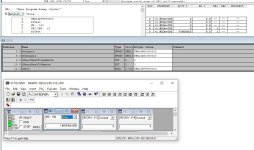Hi,
I am currently reading a Modbus value from a Device, through TCP, going into our 400 series plc. The Modbus value is a real value, and it is declared as a real value in the DB. However, the value which comes up is a Double Word value, with no comma. I suspect it is a very small value.
Anyone seen Real values in a DB, displayed as Double Word value? Never seen it before.
I am currently reading a Modbus value from a Device, through TCP, going into our 400 series plc. The Modbus value is a real value, and it is declared as a real value in the DB. However, the value which comes up is a Double Word value, with no comma. I suspect it is a very small value.
Anyone seen Real values in a DB, displayed as Double Word value? Never seen it before.





